|
The Truth About Childhood Sexual Abuse…..
Elizabeth Sullivan, CPSP www.EmpowerSurvivors.net Stillwater, MN The truth about childhood sexual abuse and trauma is that far too many children are affected by this terrible crime and crisis. Crises you may ask? Yes, a crisis indeed. The truth of this situation is far too many children are sexually abused at the hands of those they have trusted and loved. In our culture, there are far too many that believe this crime is perpetrated by strangers. We believe that this crime is perpetrated outside of friendships, churches, institutions, coaches, teachers, groups, family, close and trusted individuals. Sadly, in most cases, the crime of sexual abuse is perpetrated by those in our families and by society members that have groomed not only the child but everyone that surrounds that child. So what then do we do about childhood sexual abuse? There is no easy answer for this question but we start by acknowledging that this crime exists, listening with a loving ear to those affected, learning about the effects, prevention, the healing process, and understanding that the reality of sexual abuse affects 1 out of 4 girls and 1 out of 6 boys. We also have to understand that there is no real way to measure how many children this crime is perpetrated against because most children never tell. The statistics only measure those that were able to break their silences, most keep this secret deep inside of themselves only to have it rear its ugly head when the child is grown and in their 40’s, 50’s on up. How then do we support those that come forward with their abuse and break their silences? We start by listening with a non-judgemental, loving ear. We listen. We love each other. We give survivors safe spaces to express their grief, loss, heartache, and all the rest. Again we listen. Sadly in a lot of cases, a survivor who breaks their silence is not shown this loving support. Those surrounding the individual may not know what to say, may not acknowledge the abuse ever happened, may blame the survivor for not “ getting over it” or “moving on”, or may even tell this person that the abuse was “their fault”. This only adds to the betrayal, shame, and deep pain that these survivors already may feel. It is never a child’s fault for abuse, it is never a child’s fault for not disclosing, it is never a child’s fault for trusting an adult, and it is never the child’s responsibility to save themselves. We can educate our children on this crime, aid in prevention, but ultimately it is up to all of us to protect children. Childhood sexual abuse affects the whole person, mind, body, and spirit. It can crush the individual and lead to more childhood sexual abuse, teen pregnancies, miscarriage, academic issues, drug and alcohol addiction, poor attachments, domestic abuse, working abilities, authority issues, mental and medical health struggles, and more. This is why early detection and prevention are so crucial. If a child or individual you know comes forward please respond with a loving heart. It is vital that this person have a safe space to tell their stories, get help and support. It is important that these individuals find good, trained professionals that have a background in childhood sexual abuse and trauma. These sexual assaults and rape victims deserve the support they often craved as children. Work with them, love them, and be the person that you would want if you were in crisis. Most of all do not tell them to get over it, suck it up, judge, or push the survivor for information. If a survivor discloses their abuse, you should know that it may have taken a lifetime to get to the point of disclosing. This is crucial as what you say or do will either empower the individual or cause more anguish, harm and betrayal. Survivors of this crime can find healing. The process of healing can be incredibly difficult, painful, and at times overwhelming but with incredibly hard work and good support, healing does happen. Survivors will never forget the horrible injustices done to them but with good, solid, and loving support they can thrive. Many survivors will have to undo years of trauma, fix the cognitive distortions that originated from the abuse, suffer through flashbacks, intrusive thoughts, nightmares, anxiety, and self-hate. This is why your response will be so vital. A simple response would be “ I am so sorry this happened to you”, “thank you for trusting me with your painful story”, “ how can I help?”, or “ I am struggling with what to say but please know I love you and are here for you”. Whether you yourself were sexually abused, your partner, your family member, your loved one, or you simply would like more information about our services please feel free to visit our website at www.EmpowerSurvivors.net EmpowerSurvivors, established in 2014, is a peer-led nonprofit, operating out of Minnesota, that supports survivors of childhood sexual abuse. #EmpowerSurvivors #mentalhealth #education #wellness #prevention #nonprofitorganization #childabuse #childhoodtrauma #sexualabuse #Recovery #healing #healingjourney #peersupport #cptsd #cptsd #Community #groups #love
0 Comments
Painful
There just isn’t a way to get around it. Healing can really hurt like hell. It can feel like there is no way you will ever make it through the dark times or that true healing is not for you. Sometimes healing itself feels like it will kill you. We think to ourselves, “how can we possibly let ourselves feel this pain?” We begin to question whether or not true healing is for us or if it is just for everyone else but us. We question the hole we feel in our chest, the heaviness, and whether life is worth living. We question our own sanity, memories, thoughts….. Overwhelming Most of us have spent a lifetime suppressing the pain from our past, running from the demons of abuse. Some of us drink ourselves under the table so we don’t have to feel the pain, some of us do drugs to give a sense of relief or busy ourselves so much that we don’t even have time to possibly think or look at the pains of the past. How do we even begin to deal with this pain that no one wants to talk about including ourselves? How do we deal with the pain that everyone says to “ get over”, “quit making it such a big deal”, “it’s in the past”, “forget about it”? How do we deal with the intrusive thoughts, isolation, memories, nightmares, anxiety, flashbacks, and everything else that seems to plague us? How do we deal with the silence………. How do we deal with family or loved ones who do not understand us………………… So Step by Step One minute at a time, one hour at a time, one day at a time. That is how we do it. By taking baby steps. By allowing ourselves to feel the pain, sit with it, to mourn a loss of innocence. We do it by allowing ourselves the time we need to process the past. We do it by allowing ourselves to cry the tears we may have never gotten to cry, to seek out positive support, and allow ourselves to grieve, to process. Separating the Truth from the Lie We do it by not beating ourselves up for having a bad day, by separating ourselves from people that are not supportive or cause more pain for us in this process. We heal by going back into those memories and separating the truth from the lies. We heal by learning to love ourselves and realize that no one else can do the work for us. We heal by bringing all the darkness of abuse out into the light so it can truly be looked at, dissected. We heal by learning to love ourselves, by giving ourselves the resources and the time we need to re-learn and begin anew. We heal ourselves by staying in the game even when we think there is no hope of healing. Breaking The Silence & Care We heal by breaking our silence and shedding the cloak of shame. We heal by forgiving ourselves for things we could not control. We heal by learning how to find healing and then going out and empowering others to do the same. We heal by holding our inner children and telling them that this will never happen again. Healing IS for You Stay in the game fellow survivors, stay in the game. Healing hurts like hell but this is one situation where if there isn’t pain there is no gain. The hurt will lessen, and so will the pain. Healing IS for you, so keep showing up and stay in the game. Your fellow survivor, Elizabeth. Join us via Zoom
Monday, December 13, 2021, at 6:00pm central time for another edition of the EmpowerSurvivors program, Conversations With Elizabeth. This week we have survivor and author Tanisha Bankston who will be sharing her story of childhood sexual abuse with us and her new book " My Pain Is My Power". Tanisha's Bio: My name is Tanisha Bankston. I am a mother of 3 children. I am a survivor of rape, incest, childhood sexual abuse, trauma, and domestic violence. I lived 27 years in silence. I broke silence on July 3, 2020, when I was given the opportunity to speak on the NAASCA radio talk show. I then realized I had rediscovered my inner voice that had been trapped for 27 years. I spoke out when I was 5 years old but I wasn't believed. The trauma caused me to go into a shell and never come out until last year. I am healed, delivered, and set free. I wrote and self-published my book "My Pain is My Power" on May 21, 2021. My book is about my life story. I am praying for others to come forward and to break their silence by reading my book and that it be an inspiration. I want others to know that there is hope and to never give up. Cost: Donation to PayPal https://www.paypal.com/biz/fund?id=MRU3VP4L3KSFU Register in advance for this meeting: https://us02web.zoom.us/meeting/register/tZYvc-mqrTosGNUlAetA_6uHylmrarnexWzM After registering, you will receive a confirmation email containing information about joining the meeting. Find out more about the EmpowerSurvivors nonprofit: https://www.empowersurvivors.net/ Conversation with ElizabethThis Monday for Conversation with Elizabeth, our special guest Shari Botwin, LCSW. She will be opening the conversation on Healing After Trauma. To participate, register in advance here. In case you cannot participate to the live program, subscribe to the youtube Chanel to be notify when the episode of this Monday evening will be published. You can also subscribe to the newsletter, to receive the weekly programs on the welcome page. Here is more about Shari Botwin, her website and social medias. We hope to see you on Monday! About ShariShari Botwin, LCSW, has been counseling survivors in recovery from all types of trauma in her Cherry Hill, New Jersey private practice for over twenty-four years. Her second book, “ Thriving After Trauma: Stories of Living and Healing, Rowman & Littlefield,” (Rowman & Littlefield, November 8, 2019) deals with overcoming trauma including physical and sexual abuse, war-related injury, loss due to tragedy or illness, and natural disasters. Real stories and practical tools shed light on how to let go of shame, guilt, anger, and despair after a traumatic experience. An updated paperback of Thriving After Trauma will be released in early October. She has conducted Keynote presentations for Monte Nido, International Association of Eating Disorder Professionals, Complex Post-Traumatic Stress Organization, Hofstra University, and Bay Path University. Shari has given expert commentary on breaking stories related to trauma (Covid-19) on a variety of international media outlets; including, NBC Nightly News with Lester Holt, The Today Show, Good Morning America, CBS This Morning NBC News Now with Dr. John Torres, NBC Stay Tuned, ABC News, CBS News, MSNBC Live, CTV News, CP-24 News, CNN, Sports Illustrated, Prevention Magazine, The New York Times, Parade Magazine, Parents Magazine, Newsbreak, Greatist, The Associated Press, Philadelphia Magazine and Radio Europe. Shari has also published feature articles in Thrive Global, Medium, The Philadelphia Inquirer, and The Toronto Star. She has dedicated her life’s work to helping survivors after living through years of childhood abuse and multiple traumas in her early adulthood. BooksAuthor for Rowman and Littlefield Publishers
Title: "Thriving After Trauma: Stories of Living and Healing." Audiobook: available on audible. Conversation with ElizabethThis Monday for Conversation with Elizabeth, our special guest Mary Lynn Hinde. She will be opening the conversation with her personal story: A mental journey with Dissociative Identity Disorder. To participate, register in advance here. In case you cannot participate to the live program, subscribe to the youtube Chanel to be notify when the episode of this Monday evening will be published. You can also subscribe to the newsletter, to receive the weekly programs on the welcome page. Here is more about Mary Lynn Hinde in her own words. We hope to see you on Monday! About Mary Lynn HindieMy name is Mary Lynn Hinde.
I am a 68-year-old "kid" living with my husband, Ed, in Frederick, Maryland. Most of my professional life in the past 10 years has been working to support and advocate for homeless adults and youth. In 2013, my husband, a few community members, and I started a grass-roots non-profit organization known as the Student Homelessness Initiative Partnership (SHIP) of Frederick County. SHIP works in cooperation with Frederick County Public Schools, human relief agencies, government, and other organizations to create positive outcomes in the lives of homeless youth here in Frederick County and beyond. I recently retired to be able to spend more time with family and pursue other passions. My time living with my family of origin was highly traumatic, due to emotional and sexual abuse, which in turn resulted in multiple mental health crises and long-term issues. As part of my healing, I helped create two theatrical productions that sought to clarify widely held misperceptions of those impacted by mental health, poverty, and homelessness. I believe in the power of my voice, the responsibility of sharing my truths boldly and without shame. Join us October, Monday 25th at 6pm CT for "Conversation with Elizabeth" with our special guest Kelly Wilson talking about Emotional Dysregulation: Spotting Triggers. Register here to participate. If you cannot attend the live meeting subscribe to EmpowerSurvivors podcast here and get notified when the recording of this program will be published! Available on youtube, google podcast, amazon music and IHeart Radio About Kelly Wilson is a mom, award-winning author, comedian, speaker, and trauma recovery coach who educates inspires, and helps people explore their journeys of hope and healing out of complex trauma, specializing in PTSD recovery. As a survivor of childhood sexual abuse, Kelly writes and speaks about finding hope in the process of recovery. Through both stand-up and improv comedy, she brings laughter to audiences of all ages using a wide range of subject matter, including silly songs, parenting stories, and jokes and anecdotes revolving around mental health issues. Books Kelly Wilson is the author of Caskets From Costco, a finalist in the 18th annual Foreword Reviews’ INDIEFAB Book of the Year Awards, a finalist in the 10th annual National Indie Excellence Book Awards, and has also been chosen as a finalist in the 2016 Readers’ Favorite International Book Award Contest. She has also written and published numerous articles, poems, and short stories for children and adults in a wide range of publications, including Huffington Post and Sweatpants & Coffee. Podcast Kelly is the co-founder of two organizations: PTSD Parent and Mental Health at the Mic. The PTSD Parent Podcast is a fun podcast about serious stuff that explores what it’s like to have PTSD and navigating the important relationships that make life worthwhile. With Mental Health at the Mic, Kelly performs and teaches people whose lives have been touched with mental illness how to write and perform stand-up comedy. Find out more about Kelly at MapYourHealing.com. Map Your Healing on Social Medias
A very big THANK YOU to these amazing ladies and Healing Within Acupuncture & Wellness Studio!
This week I walked out to my mailbox to find a true gift. As a nonprofit leader, you are continually thinking of two things, the mission you have for the organization and how you will financially support the mission and those you serve. Covid has hit nonprofits especially hard. Many nonprofits and for-profit businesses alike have suffered deeply during this pandemic and charitable donations have been hard to come by. I was reminded of the goodness of people this week when I was going through mail, tossing ads, looking at bills, and then found a card from Healing Within Acupuncture which is located right here in Stillwater, MN. Healing within has been a huge supporter of our nonprofit, EmpowerSurvivors, since 2015. They have offered free services to those we serve, meditation classes, friendship, support, and more!. This week, they again showed their kindness, generosity, and support by donating $475.00 to our nonprofit. Money that is much needed and will enable us to continue offering hope, love, and support to victims of childhood sexual abuse and their families. This money was not asked for. It was simply given by two women and businesses leaders, Aimee Van Ostrand and Liz Stoeckmann of Healing within Acupuncture. Both these ladies approached me asking if they could hold a 4 - week Irest meditation class that would benefit those affected by PTSD, mental health issues, first responders, and general community members. Not only were we benefiting from their generosity but so was the community as a whole. In this day and age with the world seeming as though it has gone mad, it warms my heart to know that we have good people out there. People can be beacons of light and life to communities and these two women are just that. These women and Healing Within Acupuncture truly care about those around them and those struggling with physical, mental, and spiritual illness. Thank you, Healing Within Acupuncture, Aimee, and Liz for helping us continue our important mission here at EmpowerSurvivors. Your support means the world to us and you continually show me what human kindness really looks like in a world that too many times looks the other way. Thank you for supporting survivors of child abuse and rape, for seeing them, hearing them, and aiding them on their journeys. Learn more about Healing Within Acupuncture and EmpowerSurvivors: https://www.healingwithinacupuncture.com/.../stillwater.../ https://www.empowersurvivors.net/ Like Us on Facebook! https://www.facebook.com/healingwithinacupuncture https://www.facebook.com/EmpowerSurvivors/?ref=pages_you_manage Conversation with Elizabeth with Pete SingerJoin us next week on Monday, October 18th 2021 at 6pm (Central Time) for our Live conversation with Pete Singer on Spiritual Impact of Abuse. Register here. His Work Pete Singer is the Executive Director of GRACE, which works to equip faith communities to better recognize, prevent, and respond to abuse. He has over 30 years’ experience working with trauma, abuse, and mental health in a variety of settings. He has been a foster parent, school social worker, therapist, youth group leader, consultant, Executive Director, and more. He has worked extensively with families, teens, and children who have experienced trauma, including maltreatment, medical trauma, assault, violent loss, and captivity. His work has focused on helping children recover, facilitating parent growth and learning, and community engagement to end child maltreatment. About Pete completed his Master’s in Social Work from the University of Minnesota, where he also received a Certificate in Trauma-Effective Leadership. He speaks nationally on trauma, trauma-informed practice, resilience, strengthening the parent-child relationship, and the role of the faith community in responding to child maltreatment. He is a Registered Circle of Security – Parent Educator, Board-Approved Supervisor, and has completed extensive training in Trauma-Focused Cognitive Behavioral Therapy. He has served on several workgroups, including the Cultural Provider’s Network, Ramsey County Ending Racial Disparities Workgroup, Youth in Transition Workgroup, and more. He designed an innovative support and education program for staff in trauma-saturated fields across disciplines. Publications He has published and contributed to a number of articles and book chapters, including Mental Health and Healthcare System Responses to Adolescent Maltreatment; Trauma-Informed Legal Practice; Use of Images During Forensic Interviews of Children Who Have Been Sexually Abused; Wounded Souls: The Need for Child Protection Professionals and Faith Leaders to Recognize and Respond to the Spiritual Impact of Child Abuse, with Victor Vieth; and more. This is COLLABORATION!
Since 2015, Healing Within Studio and EmpowerSurvivors have collaborated on a number of projects. EmpowerSurvivors is a local non-profit peer-led support group for adult survivors of childhood sexual abuse. Collaboration is an effective tool for reaching more of those in need in our community. It also allows for developing programs that better meet very specific needs. Plus we truly enjoy working with each other. Building Emotional Resilience led by Liz Stoeckmann is our latest collaborative effort. Liz developed this series as a community service project and is volunteering 100% of her time and energy. Building Emotional Resilience: A 4-week iRest Meditation Series Tuesdays, October 12th to November 9th 6:30 - 7:45 pm CT, online via Zoom Liz Stoeckmann, certified iRest Meditation instructor This much-needed class is open to all. No previous yoga or meditation experience needed. Those living with chronic stress and anxiety are encouraged to attend. Class is beneficial for survivors, veterans, front line responders, and healthcare workers. Sliding fee. Pay as you are able. Proceeds go to EmpowerSurvivors. Please share with those who may need this info. Register for the series here: https://hw-acupuncture.square.site/.../yoga-and.../27... Photo by Kendra: Elizabeth Sullivan (EmpowerSurvivors), Aimee Van Ostrand, LAc, and Liz Stoeckmann at our Stillwater studio. Choosing to disclose, or share, a history of childhood sexual abuse (CSA) is a completely individual decision. While some forms of treatment or healing may involve disclosing the trauma to move forward, this may not be the most beneficial option depending on each survivor’s personality or history. Some individuals may want to share what has happened to them, while others may never choose to tell anyone for the rest of their life. Sometimes, the decision not to disclose a history of abuse may be due to a previous attempt to disclose that did not go as planned. For example, some survivors may have tried to tell someone when they were a child or when they were experiencing the abuse and may have been ignored or not believed. This may cause feelings of fear or a lack of desire to try to open up again.
Many survivors will never disclose the abuseIt has been estimated that nearly 20% of all survivors of childhood sexual abuse will never disclose the abuse, and roughly 60% will not disclose the abuse until at least five years after the first incident.1 Whatever the reason may be for not disclosing an abuse, each individual’s story is their own to tell. However, much they want to share is completely up to them, as well as when, or if, they disclose this information to their friends, family, or partners. Although this decision and situation can be handled a variety of ways, there are a few things to consider that may help an individual make the decision to disclose a history of abuse, and ideas to make the process as positive and healthy as it can be. These include, but are not limited to:
|
Archives
May 2024
Categories
All
|

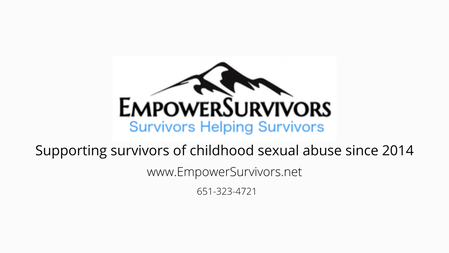

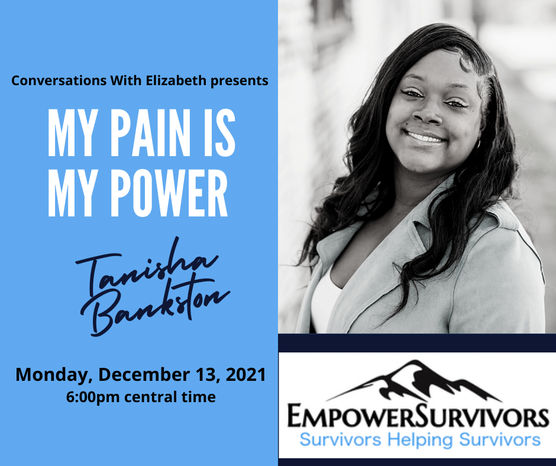
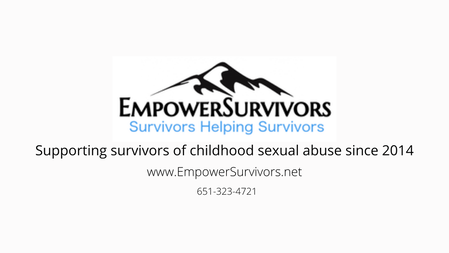
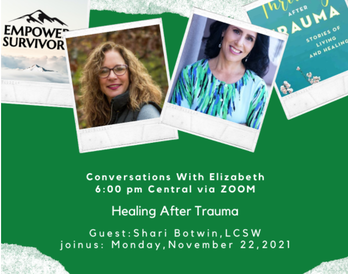
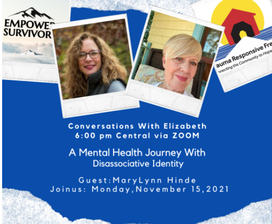
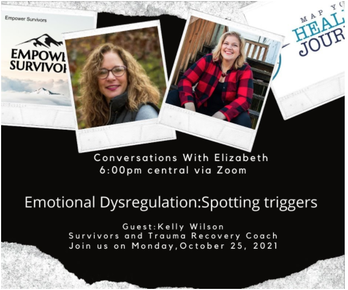

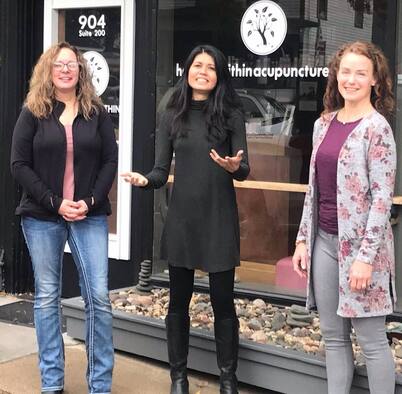
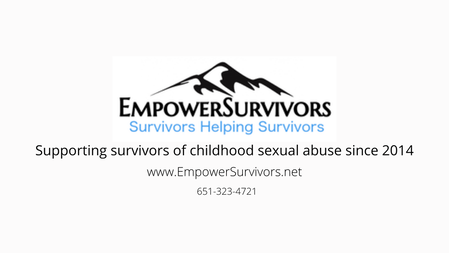
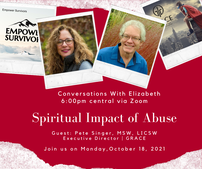
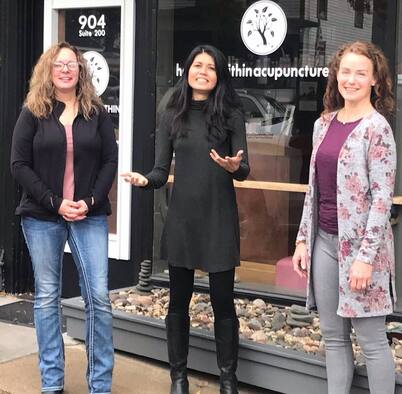


 RSS Feed
RSS Feed